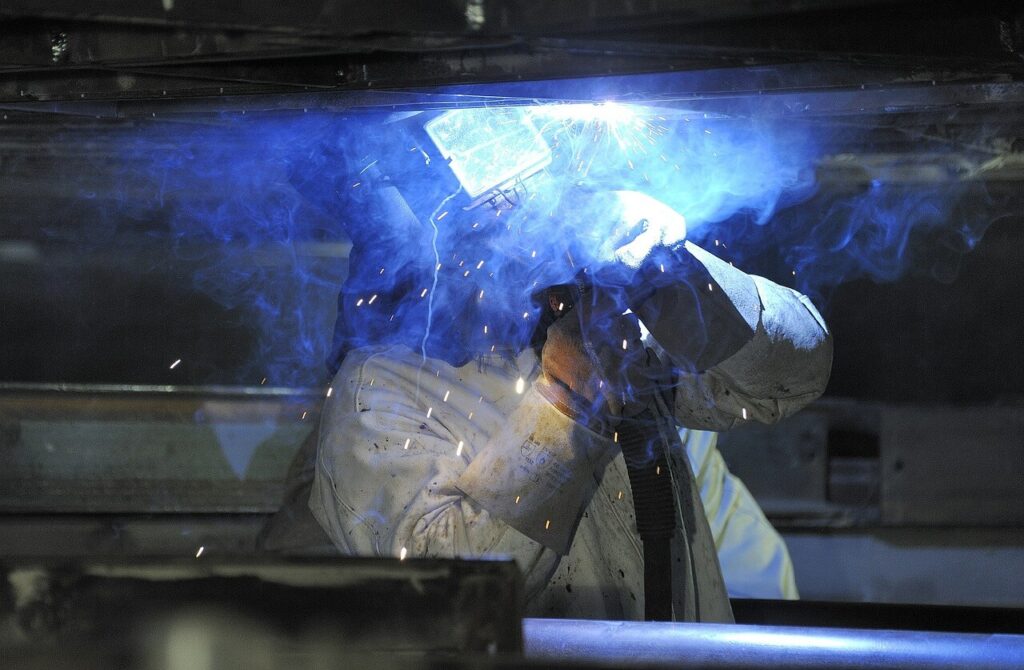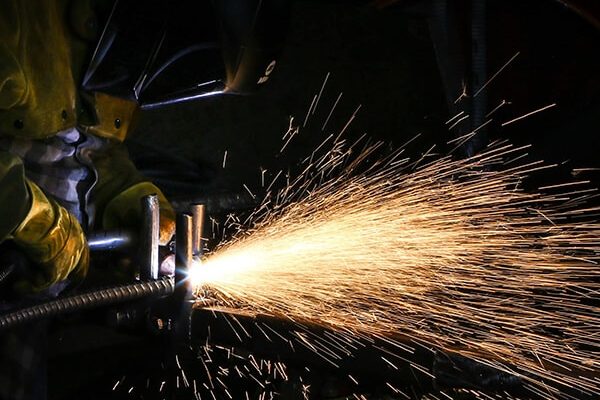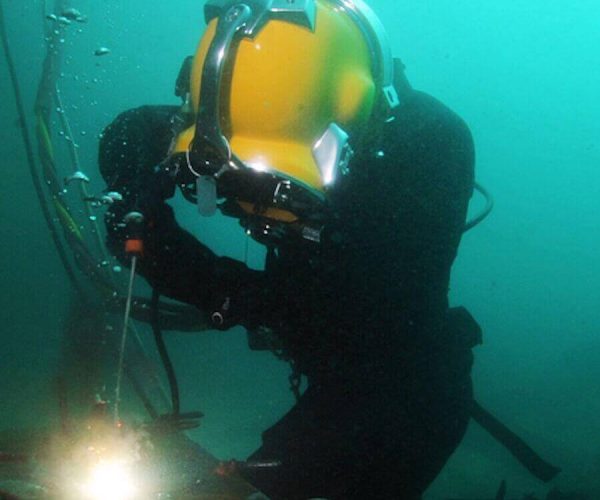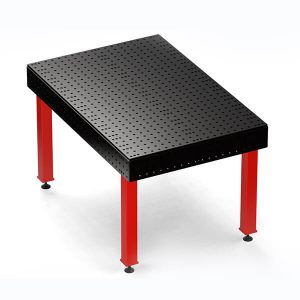Blogs By Cyclotron
Welding spatter: A complete guide
Welding is one of those industries that relies heavily on the precision & product quality. Any compromise in weld quality, either due to damages or contaminants, can pose significant safety challenges for users. One common issue encountered in welding is the presence of tiny droplets and indents near the welded region, known as welding spatter. These minute droplets can have detrimental implications, affecting weld quality, the safety of the welding environment, and also the efficiency of the welding process.
In this article, we try to understand the nature and effects of welding spatter and minimize it to achieve the highest quality, safety, and efficiency in welding operations.
What is a Weld Spatter?
Welding spatter refers to the small droplets of molten metal formed near the welding region due to splashes from the weld pool. These hot droplets can land on various surfaces, including the workbench, floor, workpiece, or the surrounding environment. It can lead to rough surfaces, poor weld quality, and safety hazards for operators.
During the welding process, spatter can originate from either the weld pool, welding wire, or both. While spatter negatively affects the aesthetics of the welded part, its removal is necessary for the weld to pass quality tests. However, this removal process typically requires manual intervention by operators.
To address spatter-related issues, companies often invest in grinding equipment and abrasives for effective removal. However, the maintenance and adherence to safety standards for such equipment contribute to additional costs. Thus, controlling spatter is crucial for maintaining weld quality and also for ensuring operator safety and managing operational expenses.

Why Prevent Spatter Welding Defect?
While spatter is inevitable in certain welding processes, excessive spatter can lead to welding defects that affect weld quality. Here are several reasons why preventing spatter is essential:
1. Safety Hazard: The droplets of weld spatter can be hot and sharp, posing a serious safety hazard to welders and other nearby operators. Contact with the eyes or skin can result in severe injuries and burns.
2. Poor Weld Quality: The minute hot sparkles stick to the workpiece and tool, depreciating their life and performance. The spatter, when it falls on the surface of the base metal, results in poor surface finish and the loss of metal.
3. Increased Cleanup Costs: If a weld spatter occurs, it must be manually removed or treated with grinding equipment, adding additional time and labor costs to the welding process.
4. Equipment Wear and Tear: Spatter adheres to welding equipment, including nozzles, torches, and tips, leading to their wear and tear. This necessitates frequent maintenance and replacement of consumables, adding to operational costs.
Preventing spatter is crucial for ensuring the safety of operators, maintaining high weld quality, reducing cleanup costs, and prolonging the lifespan of welding equipment.
How To Avoid Spatter In Welding?
The good news is that you can always prevent weld spatter and achieve cleaner, more efficient welds using several techniques:
- First and foremost, ensure thorough cleaning of the base metal to remove any oil, grease, or impurities. Proper base metal cleaning and preparation are essential to prevent weld spatter and improve weld quality.
- Excessively high welding currents can lead to rapid melting of the welding wire, disturbing the weld pool and resulting in weld spatter. Adjusting welding currents to appropriate levels helps minimize spatter.
- Using the wrong shielding gas can cause arc instabilities, leading to weld spatter. It’s crucial to use the correct shielding gas and maintain proper gas flow rates to minimize spatter occurrence.
- Optimize wire feed speed to maintain a stable arc and consistent wire bead. Any fluctuations in wire feed speed can contribute to weld spatter.
- Maintain the weld torch at the correct angle, typically around 15 degrees, and move it steadily along the weld joint. Proper torch positioning and movement help reduce spatter.
- Adopting a proper welding technique is crucial in preventing spatter. This involves maintaining a steady hand, holding the torch at the right angle, and employing consistent weaving motion. Any erratic movement can result in spatter, affecting weld quality.
- Invest in high-quality welding consumables such as wires, contact tips, and nozzles to minimize weld spatter. Choose reputable brands and suppliers for reliable performance.
By implementing these techniques, you can effectively avoid weld spatter and achieve cleaner, more efficient welds in your projects.
Antispatter Welding tables



The Causes of Weld Spatter
1. Metal composition
Not all materials are suitable for welding. Some metals contain components with poor weldability. Few manufacturers use cheaper additives to reduce the cost. They may contain contaminants and impurities that cause excessive spatter.
The quality of filler to be used is important. Low grade and cheap coatings seriously affect the weld quality and produce excess spatter. Quality comes with a cost. Some money has to be spent to improve quality and minimize spatter.
Using the right material and specific coatings on the metal before you weld, minimum spatter can be obtained. These coatings include galvanised coating, coatings of zinc, rubber, etc to cover the surface.
The area to be welded should be grinded slightly to remove the coating so that fresh metal could be welded without contamination and spatter can be minimised.
2. Presence of impurities
The cleaner the weld is, the less spatter will be formed.Dirt is an important contributor to spatter. If the base metal is not cleaned properly or contains oil, grease, scales, etc it makes the weld arc spit and splashes spatter, out of the weld zone. Clean the base metal and the area to be welded before performing the fabrication operation.

3. Poor handling of Welding equipment
Welding equipment should never be left free and uncovered. There are high chances of contamination of the fresh metal. The metal may be exposed to Oil, dust, and rust leading to corrosion that causes excessive spatter. After use, the welding components should be cleaned and wrapped up for safe and better handling.
4. Welding parameters
Weld settings and machine settings play a crucial role in producing spatter. If the amperage is too high or voltage is too low, weld spatter occurs. Also, if the distance between the contact tip of the electrode to the workpiece is more, weld spattering occurs due to the lack of penetration and porosity.
Accurate machine settings are required for smooth welding and stable arc which minimizes weld spatter to a great extent. The accurate settings come with experience. However, setting charts and programs can be used as a reference, as some minor adjustments have to be made according to real-life conditions.
Amperage, voltage, and speed combination should be accurate for fine-tuning and smooth welding with minimum or no spatter.

5. Wire feed problems
The dirty or rusty spool of wire feeds erratically and produces excess spatter. Too fast wire feed disturbs the arc and causes excessive weld spatter. Non-uniform wire feeding fluctuates the amperage and causes spatter.
6. Roller setting and handling:
An appropriate drive roller has to be installed according to the wire size. If the roller size is not exact, the wire feed will not be in tension, it will be loose and will slip over the roller due to which current fluctuations occur and result in a lot of spatter.
7. Welding gas
The gas flow rate for shielding gas is one of the parameters that decide spatter. The CO2 gas in MIG welding acts as a shielding gas that not only protects your weld but also helps to stabilize the arc. The improper flow of gas from the cylinder interrupts the continuity of the shielding gas over the weld area. The lack of shielding gas disturbs the stable arc and produces spatter.
C02 and Argon gases work best as shielding gases. Different combinations can be used for different types of welding.
8. Poor earth clamp connection
If the earth clamp connection is loose, it makes the arc fluctuate and causes splatter. Check the clamp and machine for loose connections. Attach your clamp closer to your weld area for stronger connections.
9. Improper contact tips:
Oversized, loose, or worn-out contact tips of a weld nozzle cannot carry the current properly. As a result, the arc gets unstable and leads to spatter. With an oversized contact tip opening, the wire electrode can lose contact with the tip and cause spatter
10.Incorrect Torch angle:
Usually, the torch angle should be 5-15 degrees from vertical, which helps the shielding gas to protect the weld area efficiently. It is easier to deviate from the angle if we try to view the weld puddle. Too much gun angle pushes the gas to one side and leaves the other side unprotected which results in weld spatter and weld porosity ultimately.
Steep angles and some welding techniques cause spatter if you drag too fast.

Conclusion
Some anti-spatter sprays are advertised to reduce spatter. But the Anti-spatter gel or spray doesn’t reduce spatter. A light coating of anti-spatter spray on the weld nozzle can prevent the spatter from sticking, making it easier to clean.
Most of the causes of weld spatter and solutions to eliminate it have been addressed in this article. In addition to the above, skill and expertise of the welder is also a key factor in contributing to the spatter.



